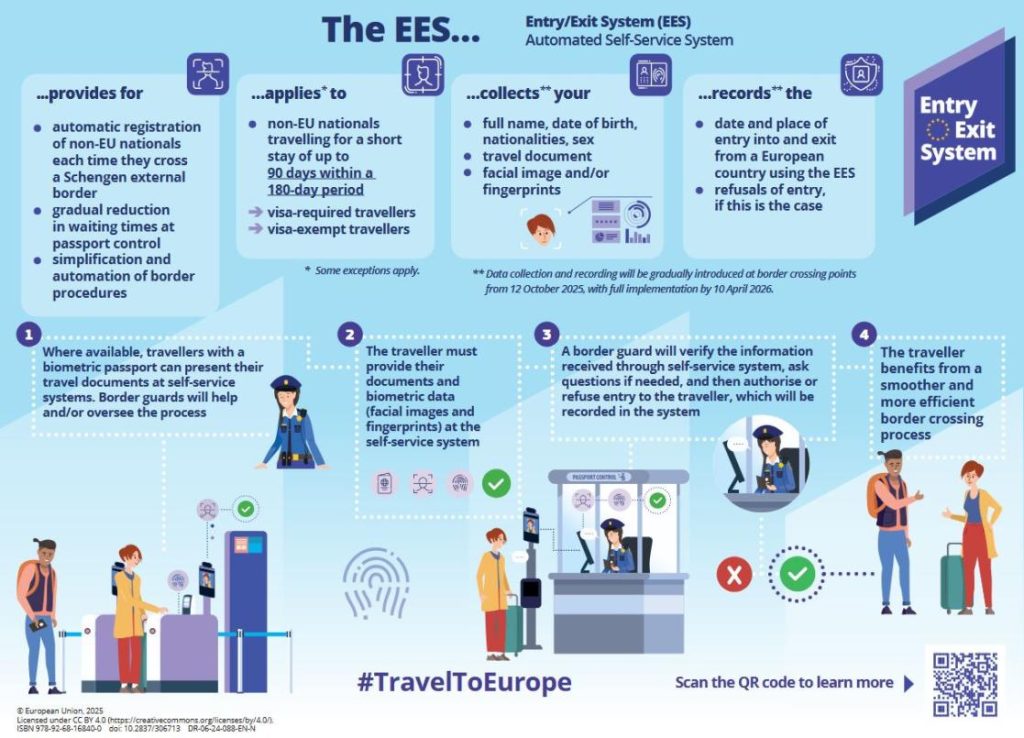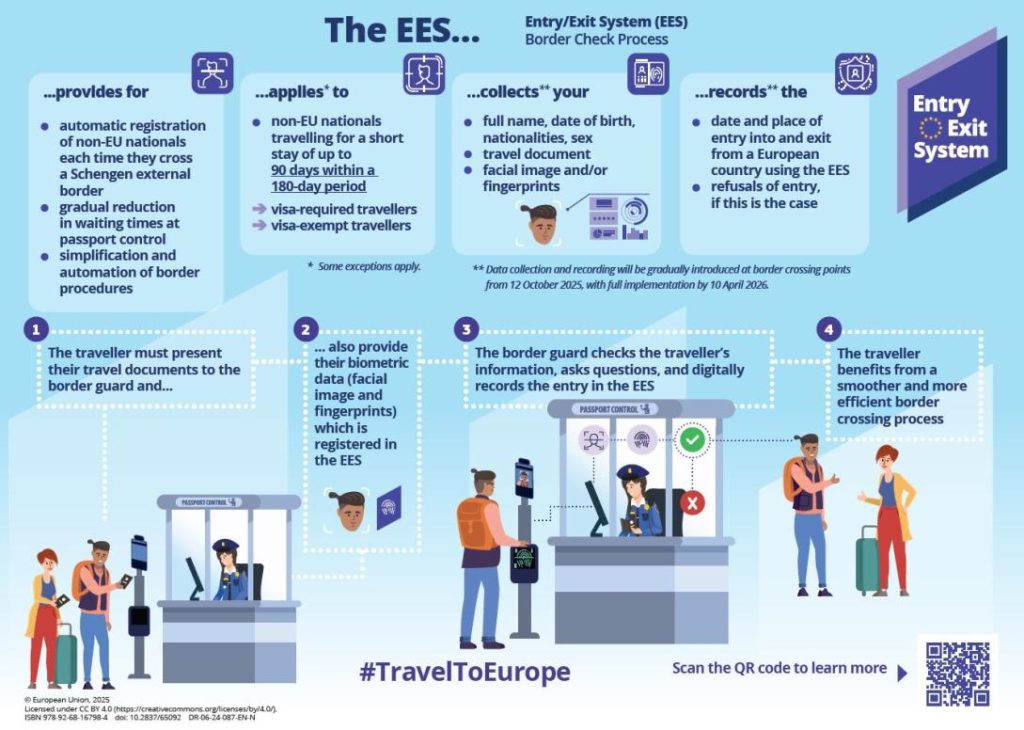Last updated on 8 October 2025
The Entry/Exit System (EES) is an automated IT system for registering non-EU nationals travelling for a short stay, each time they cross the external borders of any of the following European countries using the system:
Austria, Belgium, Bulgaria, Croatia, Czechia, Denmark, Estonia, Finland, France, Germany, Greece, Hungary, Iceland, Italy, Latvia, Liechtenstein, Lithuania, Luxembourg, Malta, Netherlands, Norway, Poland, Portugal, Romania, Slovakia, Slovenia, Spain, Sweden, Switzerland.
For the purpose of the EES, ‘non-EU national’ means a traveller not holding the nationality of any European Union country or the nationality of Iceland, Liechtenstein, Norway or Switzerland.
‘Short stay’ means up to 90 days within any 180-day period. This period is calculated as a single period for all the European countries using the EES.
The new Entry/Exit System (EES) will start operations on 12 October 2025. European countries using the EES will introduce the system gradually at their external borders. This means that data collection will be gradually introduced at border crossing points with full implementation by 10 April 2026. For more information – see What does progressive start of the EES mean?


